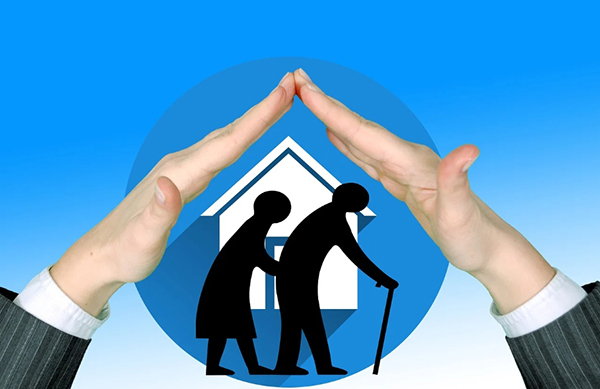To maintain bone health, prevent osteoporosis. Osteoporosis is a systemic bone disease characterized by decreased bone mass and increased risk of fracture. An osteoporotic fracture (also known as a fragility fracture) is a fracture that occurs as a result of minor trauma or daily activities and is a serious consequence of osteoporosis.
Osteoporosis can be prevented and treated. The whole society should pay attention to the whole life cycle bone health.
0 to 18 years old nutrition + exercise to achieve peak bone mass
Bone mass changes dynamically throughout the life cycle. Children and adolescents are the most important period of bone building, if the bone mass can reach the ideal value in this period, it is of great significance to prevent a variety of bone diseases. The study showed that for every 5 percent increase in peak bone mass, the risk of developing osteoporosis in old age fell by 40 percent.

How do you keep bone health from losing at the starting line? First, maintaining a balanced nutrition is conducive to bone health. In terms of diet, you should pay attention to the intake of calcium, vitamin D, protein, vitamin K and magnesium foods. People between the ages of 1 and 18 need to consume 700 to 1300 mg of calcium per day. People between the ages of 4 and 18 need to consume 19 to 50 grams of protein per day, and strengthen the intake of dairy products, eggs, fresh fish and meat. Pay attention to nutrition and increase the proportion of food that is conducive to bone health.
Second, consistent exercise helps increase peak bone mass. It is recommended to do physical exercise regularly and cultivate the habit of long-term exercise. Of course, avoid overdoing it. It is recommended to do more than 60 minutes of aerobic exercise every day, such as running, walking, swimming, dancing, cycling, etc. Do muscle strength exercises for 60 minutes or more at least three days a week, including running, jumping rope, playing basketball, tennis, and resistance training.
Third, to avoid bad habits, such as smoking, alcoholism, excessive drinking of carbonated beverages, coffee, etc., but also to avoid being too thin. In addition, it is necessary to actively treat diseases that may affect bone health, such as anorexia nervosa and inflammatory bowel disease.
In short, we should pay attention to the prevention of osteoporosis and pay attention to the most critical stage of preventing bone diseases. Children in children and teenagers should strengthen nutrition and exercise, and change bad living habits to achieve the ideal peak bone mass.
From 18 to 40 years old, increase sunlight and strengthen bones
After accumulating bone mass during adolescence, people over 18 years old to 40 years old should do a good job of bone health maintenance, especially to pay attention to sun exposure, to ensure that bones have adequate vitamin D.
Vitamin D has two main functions in the human body: First, after vitamin D is activated in the body, it directly promotes intestinal calcium absorption, maintains a good level of blood calcium, and provides important raw materials for bone growth; The second is to promote bone metabolism and maturity, so that the balance between bone formation and absorption.
When the vitamin D content is low, the body's blood calcium will be low, which will stimulate the secretion of parathyroid hormone too much, resulting in hyperparathyroidism, promote bone absorption, easy to lead to osteoporosis, which is an important pathogenesis of osteoporosis in the elderly. In addition, people who are deficient in vitamin D can feel weak, fall easily, and increase the risk of fractures.
Adequate sunlight exposure is very helpful in raising vitamin D levels. Vitamin D produced by the skin in response to ultraviolet light from the sun, the endogenous vitamin, is an important source of vitamin D in the body. Exogenous forms of vitamin D, such as some deep-sea fish, cod liver oil, mushroom plants also contain vitamin D. Vitamin D can be supplemented through food, but the amount of vitamin D in it is generally not very much.
Increasing sunlight and getting more sun exposure is an important way to maintain vitamin D levels. Generally speaking, in the spring, summer and autumn, from 10 am to 4 PM Beijing time, the face and upper arms are exposed to the sun, a total of 15 to 30 minutes each time, maintained 3 times a week, basically to meet the nutritional needs of the human body vitamin D. However, pay attention to avoid strong light exposure to prevent burning the skin.
In addition, you can also choose some vitamin D supplements. 200IU per day is recommended. If you are a patient with vitamin D deficiency, the daily supplement dose may be more, which needs to be evaluated by a professional doctor.
Bone mass screening over 40 to 65 years of age is preventative
People over 40 years old to 65 years old should understand and be familiar with osteoporosis, annual bone mass screening, early detection, early diagnosis, early treatment. Bone mass refers to the amount of bone tissue per unit volume and can be measured by bone density. Bone density is an important indicator of bone strength and is an absolute value. The occurrence of osteoporosis is closely related to the accumulation of basic bone mass and the loss of bone mass after aging, and there are no obvious symptoms in the early stage, and it is usually silent when it occurs, which can be said to be a silent "health killer". The diagnosis of osteoporosis is based on bone density measurements and/or fragility fractures.
The incidence and disability rate of osteoporotic fracture are high, and the treatment cost is high. Each time a person with osteoporosis breaks a bone, the risk of another fracture increases exponentially.
In addition to an annual professional bone mass screening, three simple tools for osteoporosis risk assessment are recommended here.
The first is the International Osteoporosis Foundation's (IOF) one-minute Osteoporosis risk quiz. As long as the answer is "yes" to one of these questions, it indicates the risk of osteoporosis, and bone density testing is recommended.
The second is the Asian Osteoporosis Self-Screening Tool (OSTA), OSTA index = (weight-age) ×0.2, body weight unit is kg. OSTA index > -1 indicates low risk, and OSTA index -4 ~ -1 indicates medium risk. An OSTA index < -4 indicates high risk.
The third is the fall risk factor assessment scale. Falls are an independent risk factor for osteoporotic fractures. In other words, the fall is actually a wake-up call, indicating the risk of osteoporosis in the human body.
Overall, bone mass screening is very important, not only to reduce the risk of fracture, but also to save the cost of post-fracture treatment.
It's never too early to prevent osteoporosis, and it's never too late to prevent fragility fractures!
Over 65 to prevent falls and avoid fractures
Preventing falls, and preventing fractures from falls, is the bottom line for bone health in people over 65 years of age. Please remember the "12 words" formula of the elderly to prevent falls - to exercise, to be convinced of the old, to be suitable for the old, early treatment.

Exercise -- exercise is good medicine. Exercise can help the elderly to cope with and delay the decline of physiological function caused by aging, so that they can keep in a better state. A large amount of scientific evidence shows that scientific and reasonable exercise not only helps prevent falls, but also reduces the risk of fractures caused by falls. Balance training such as side walking, heel to toe walking, golden rooster independent shift of weight, and functional training such as Tai Chi have a certain effect on improving the balance ability of the elderly and preventing falls.
Be old -- slow is better. As the body function continues to decline, the elderly should gradually slow down the pace of physical activity. For example: turn around slowly; Take your time answering the phone or crossing the street; Don't get up in a hurry, follow the principle of sitting up for 30 seconds, hanging legs to the bed for 30 seconds, standing for 30 seconds and then walking for 3 and a half minutes.
Be old -- armrest is a treasure. We can provide an appropriate aging environment for the elderly, such as handrails in toilets, corridors, stairs and seats, and suitable crutches and walkers to support the elderly to walk safely.
Early treatment - Know the risks. Falls are associated with many diseases, such as musculoskeletal disorders, eye disorders, and neuropsychiatric disorders. After the elderly fall, whether injured or not, they should inform their families or doctors in time, investigate the causes of the fall, and actively treat them.
It is hoped that the elderly and their families, as well as the elderly in the future, will keep in mind the knowledge of elderly fall prevention, help the elderly at home to effectively avoid falls and prevent fractures.
People's health cannot be separated from bone health, so let's focus on bone health throughout the life cycle together
Author: Xia Weibo, expert of National Health Science popularizing expert Database and director of Endocrinology Department of Peking Union Hospital, Chinese Academy of Medical Sciences
Duan Leilei, expert of National Health Science Popularization expert Database and director of Injury prevention and Control Room of Chronic Disease Center of Chinese Center for Disease Control and Prevention
Song Chunli, vice president of Peking University Third Hospital
Li Mei, deputy director, Department of Endocrinology, Peking Union Medical College Hospital, Chinese Academy of Medical Sciences
Planner: Tan Jia
Editor: Li Jun
The picture is from the Internet, if there is infringement, please contact us to delete
Post time: Sep-04-2024
